TikTok Pricing: How Much Do TikTok Ads Cost for Businesses?
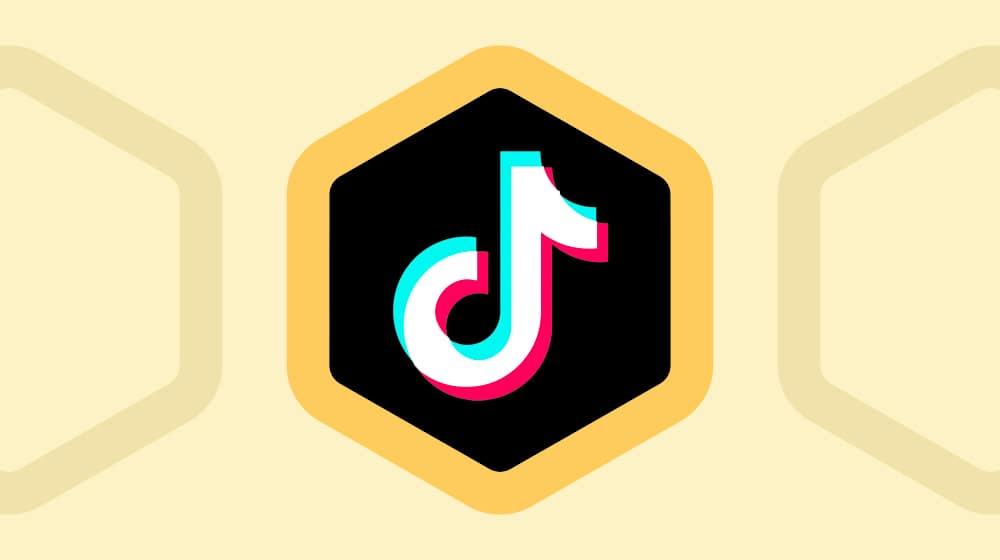
TikTok is a platform that, for some people, seems to have exploded out of nowhere. For others, it's been growing steadily in the background before reaching the mainstream. It's surrounded by controversy, both because of its Chinese origins (and subsequent political posturing) and because it's precision-designed to be a highly addictive dopamine slot machine, keeping people hyper-engaged with short, niche videos on virtually every subject.
Obviously, this is an incredible opportunity for social media marketing!
How TikTok Ads Have Changed in 2024
The year 2023 was a busy year for TikTok Ads, and as we had into 2024, there are many new ad features to play with, each with their own pricing implications. It's pretty big news for both businesses and advertisers. This can affect the way they set their ad budgets.
A main update concerns the Smart and Broad Targeting system. If you can imagine, this new system could make reaching a bigger audience cheaper. It lessens the need for hard rules and stands on TikTok's algorithm to make sure ads reach people the right way. Advertisers may see better engagement rates without needing to spend more, leading to a greater return from their ad spend.
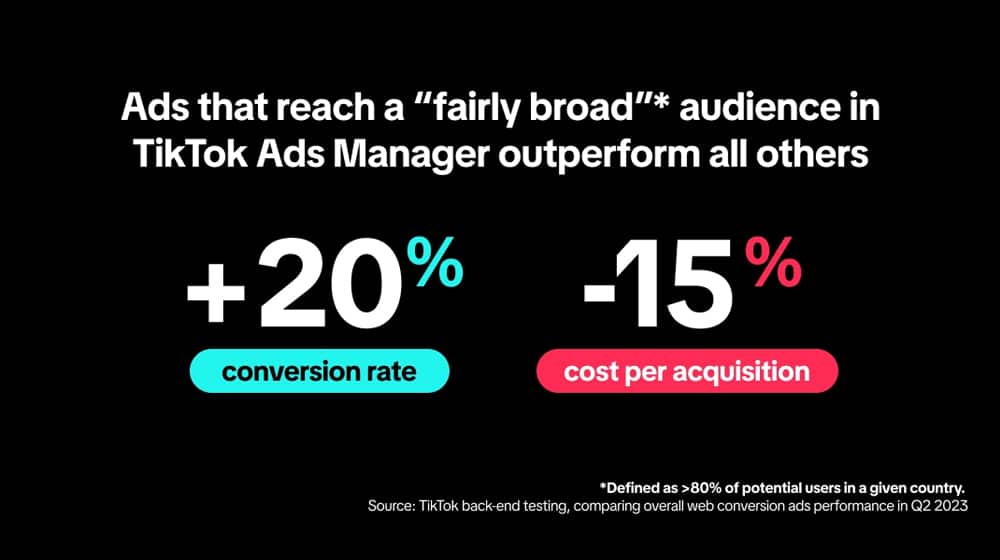
Other updates from TikTok include things like Text Posts and Keyword Insights Tool. There are also new features like TikTok Shop, In-App Gaming, and the Pulse Program. These are all intended to improve how ads work on the platform. Each new tool or feature could mean a change in prices, but specifics depend on things like the campaign's goals, its target audience, and its size. The TikTok Shop for example, might come with extra costs, which in turn could affect a business's total ad spend.
It's not clear yet if the price of using TikTok Ads Manager will change in 2024. The cost of this tool typically gets included in the full ad budget. Prices change pretty often, and the size and complexity of a campaign play a big part in this; as you might imagine, bigger and more complex campaigns will see their prices shift more drastically as these new features evolve.
As for ad strategies, some tactics like User-Generated Content (UGC) impact content strategy more than they do pricing. UGC might be cost-effective due to lower production costs, and it balances traditional advertising. Authentic and storytelling content does not directly lower costs but could increase their effectiveness, impacting the in general ROI. Themes like popular audio, humor, and wellness within ad content can draw audiences in, which doesn't mean higher ad costs.
So you see, even though changes to TikTok's advertising features could impact ad engagement and performance in 2023, the average cost of ads hasn't necessarily increased or decreased. Stats from Statista show that TikTok's advertising market share will rise to 3.5% in 2024.
What Makes TikTok Great (and Not-So-Great)
TikTok is probably the fastest-growing social network of the current generation. As Twitter spirals into the ground at increasing speeds and Facebook bleeds money trying to kick-start the metaverse to a world-shaking "meh," people who are bored or dissatisfied start looking for other places to go.
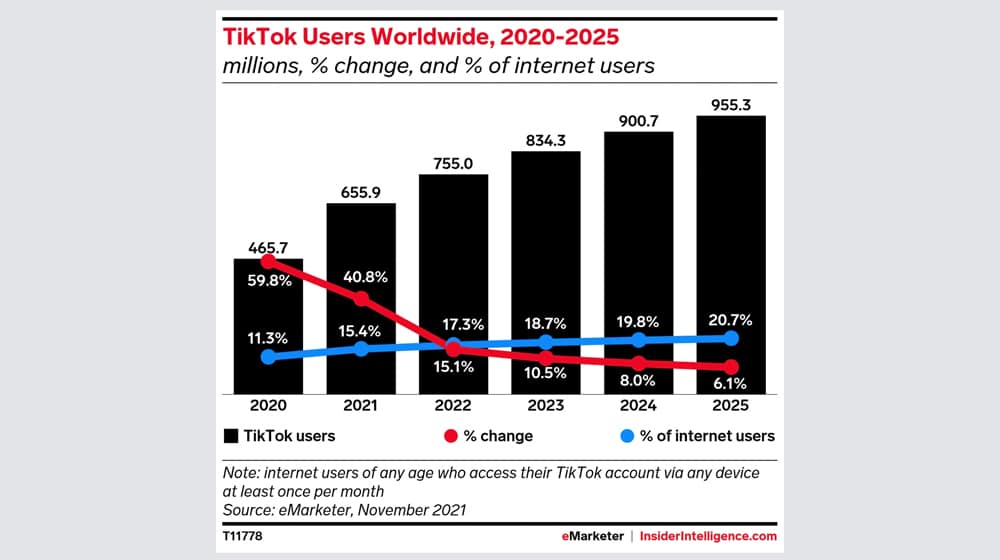
A the same time, the inexorable march of technological progress means that certain forms of media are no longer nearly as out of reach as they once were. In particular, I'm talking about video.
Video production used to be a huge ordeal. You would have to have a camera capable of recording high-quality video, a microphone to record audio that didn't sound like it was in an unfiltered wind tunnel half a mile away, and the software and know-how to stitch it all together. Then you'd have to think of all of the important aspects of a good video, like the script writing, the lighting and framing of a scene, the timing, and more.
All of that is still very important on YouTube. YouTube is very much the premier spot for content, and trends have been pushing it towards longer, higher production-value videos for a while now. All the biggest videos – when they aren't the latest music videos, game trailers, or commercials – tend to be prestige content.
Two different pressures led to TikTok:
- The first is nostalgia for the days of shorter and more casual videos, like back when Vine existed. Instagram's Reels and YouTube's Shorts have tried to replicate this, to some success, but TikTok truly took over the space.
- The second is a lower level of pressure and a higher level of social interaction.
That's where TikTok truly shines. It's not just about the short video format; it's about the communities and socialization the platform provides. Creators can rip out a quick video on their phone, add a few effects like the "oh no" song or some text-to-speech, and create the next viral trend. TikTok incentivizes this with new tools to capitalize on trends or spark them, like making it easy to "sing along" with a video and creating all of those sea shanties that were super popular a few years back.
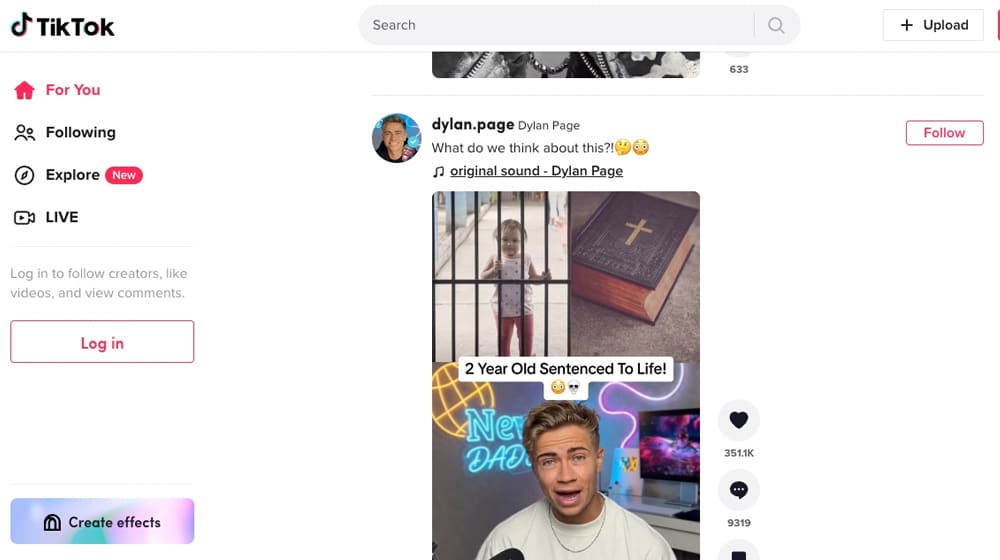
Easy accessibility, phone-based integration, and a high degree of social feedback have made TikTok the go-to hangout space for a lot of younger millennials and especially Gen Z.
For any business that wants to hook younger audiences, TikTok is one of the best possible venues.
And oh, what an audience.
Is TikTok Safe for Advertising?
To address the elephant in the room, let's talk a little about the concerns people have with TikTok.
As a brand, you might be worried about putting information – like business information and financial information – into the app. TikTok has tried to assuage those fears with something called "Project Texas," wherein data from American TikTok users is stored in a subcontractor's server farm in the USA rather than on Chinese servers, so it can't be handed over to the Chinese government. Though they also say that the Chinese government hasn't asked for the information either, so the point is kind of moot.
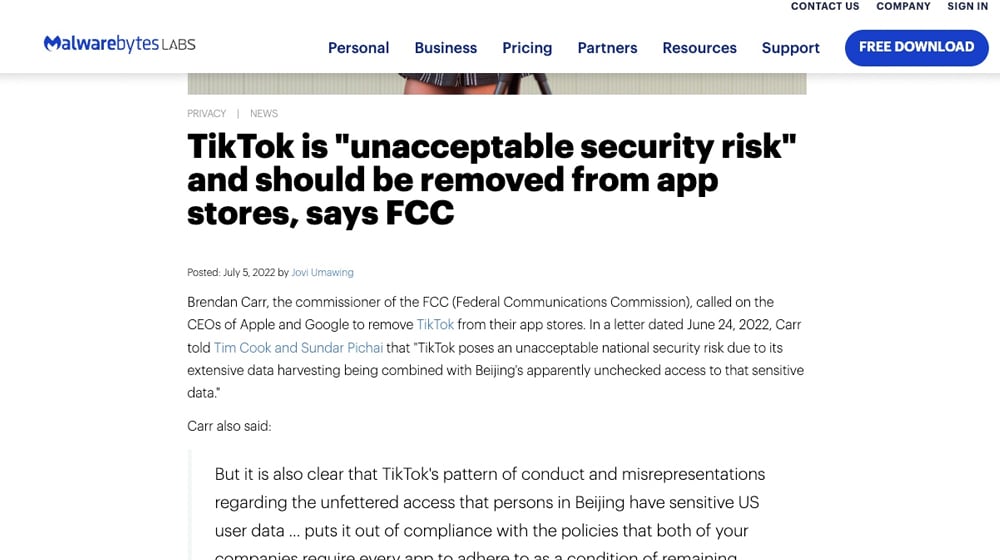
Honestly, pretty much all of that is political posturing and is just another battleground between Washington and Beijing in terms of economic and social influence around the world.
For businesses and users, this concern is usually ignored. Some people take it very seriously and remove TikTok from their phones; others laugh about it and aren't concerned. We know it's an issue and that the US Government will likely pass some legislation to address it, but it's still the wild west for now.
What does matter is that TikTok has earned a variety of advertiser safety awards like TAG certification. There isn't really anything to be afraid of as a brand advertising on TikTok. There are also standard brand safety rules to help protect against things like phishing and impersonation, which TikTok has also been putting some focus on.
You may also have seen reports about how TikTok is "full of sexual content and violence."
This is partially true – any video platform on the internet is going to have people posting thirst traps, beautiful women, and so on – but it's no worse than something like Imgur, Reddit, Tumblr, Twitter, Facebook, Instagram… you get the idea. Places with user-generated content are going to have challenges with explicit images and moderation.
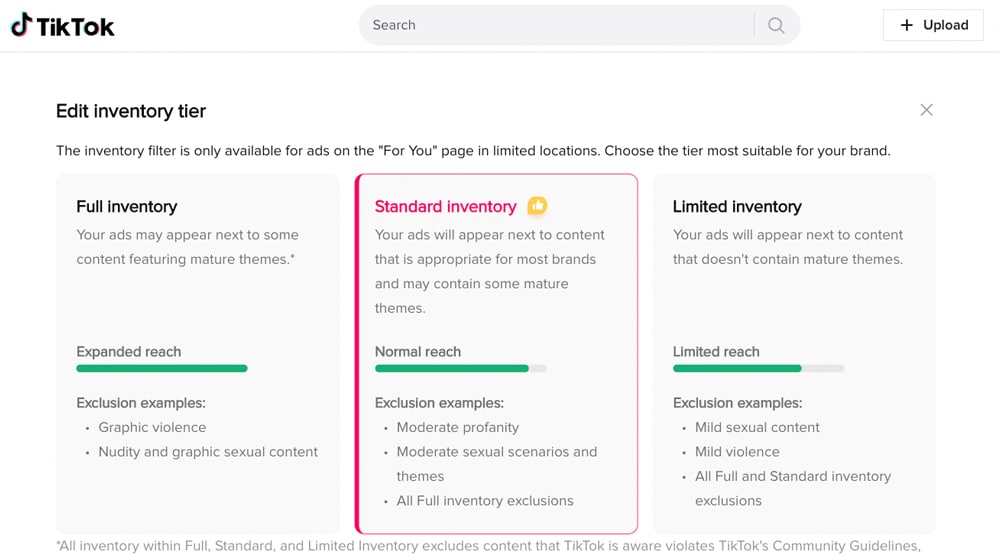
That said, when you run ad campaigns, you can choose which video inventory you want to use. There's a Limited Inventory, which excludes anything that isn't completely wholesome and suitable for children; a Standard Inventory, which can include videos talking about or depicting some mature themes but nothing major, similar to a PG13 kind of rating; and the Full Inventory, which is everything that doesn't violate their content guidelines in the first place.
How TikTok Advertising Works
TikTok is a platform for short videos produced by content creators, so how do ads play into it?
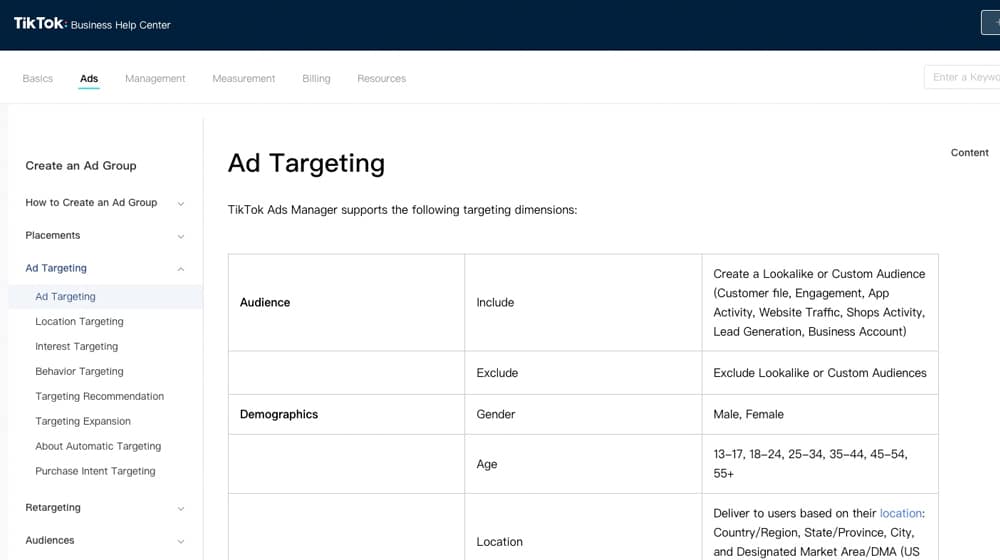
These can take several forms on the platform. Here are some of the different types of TikTok Ads:
- In-Feed Ads. These are your usual "commercial" ads; they show up as paid content in a TikTok feed and are just videos in a TikTok format
- Image Ads. Just an interstitial image in between videos or on the feed. This ad creative is probably the most bog-standard advertising imaginable.
- Spark Ads. Spark Ads are a unique kind of ad on TikTok. You can think of them as broadly comparable to something like Facebook's promoted posts; they take your business's organic videos and promote them. The unique twist is that once you pay to promote them, they stay promoted, even if you stop paying. And, since they're still organic videos, they can be interacted with just like any other video ad, using features like the Duet or Stitch options.
- Playable Ads. If you've ever been playing a mobile game and encountered an ad that is a mini-game promoting a different game, that's basically what these are; they're interactive, game-like ads. They aren't available in the USA, though.
- Shopping Ads. A new format to replace a few other more commerce-focused ads; these are still in testing and are only available to select advertisers for the moment.
- Managed Ads. If you're big enough to be invited to TikTok's Managed Brands program, you have access to a few more formats, like branded hashtag challenges and TopView ads.
There are also two other kinds of advertising programs you'll see come up.
- Global App Bundle placement. TikTok is doing the same sort of thing Facebook did with Instagram and WhatsApp and trying to build an app portfolio with cross-app advertising. This bundle is a one-stop placement for ads on all of their apps.
- Pangle Placements. Pangle is TikTok's "Audience Network," aka their off-app display ads. It's also limited to certain countries and may not be available to you, and anyway, since it's not advertising on TikTok, I'm not really concerned about it today.
Within all of this, you have your usual ad network choices. You can choose placements, set ad budgets, choose objectives like exposure, clicks, or awareness, and so on. It's all fairly standard on the back end.
How Much Do TikTok Ads Cost?
As with any paid advertising program or platform, the ads cost as much as you are willing to spend.
They use the same sort of bidding and auction model that most other paid ad platforms run, though you're almost guaranteed to get some kind of placement simply because competition is relatively low for the time being.
Some statistics put the cost of ads at $10 per thousand views for CPM ads and $1 per click for CPC ads. Of course, savvy advertisers know these kinds of numbers are nearly valueless since they vary so widely between industries, niches, formats, and even seasonality.
For some businesses, $50 per day is a ton of money; for others, it's barely noticeable in their overall ad budget.
Similarly, at the ad group level (the equivalent of a Facebook or Google ad set), there's a $20 fee. Running 3x ad groups within one campaign will cost you $60 per day minimum.
TikTok does provide a "suggested bid" that they explain here, which gives you some idea of how much you should be bidding to reach the goals you want to hit with the ads you've created. It's not perfect, but it gives you a starting point.
Do TikTok Ads Result in Conversions?
As a digital marketer, I've long sought to identify the most effective social media ad formats and platforms that generate conversions. A significant portion of my focus has gravitated towards TikTok in recent years - and for a good reason. TikTok Ads Manager offers a plethora of ad formats that appeal to the app's diverse user base, it's affordable, and its audience is huge.
Here's a personal anecdote that may resonate. I once ran a campaign objective for a client that was focused on app installs, leveraging TikTok's unique full-screen, sound-on format. We received a lot of traffic for our $500/day budget, but more importantly, we saw a significant increase in app downloads, leading me to conclude that the type of ad plays a critical role in driving conversions. With other ad types, we received a ton of impressions but very few conversions.
Now, let's consider the conversion cost. The TikTok advertising cost may seem daunting initially, with a minimum budget requirement of $50 daily for the campaign level and $20 for the ad group level. Yet, I've found that when used strategically, this investment can be worth it.
Like other ad networks, such as Meta / Facebook Ads, LinkedIn Ads, and Google Ads, you'll see some familiar targeting options:
- Let's take the cost per click (CPC) into account, for example. CPC is a crucial metric in any bidding-based marketing strategy, and TikTok's average cost per click can vary. My campaigns have typically seen CPCs ranging from $0.01 to $1.00, depending largely on ad spend, campaign objective, and optimization strategies.
- Cost cap and CPA (cost per action) campaigns are another consideration. While cost cap campaigns allow for control over your average costs, CPA campaigns focus on conversions, optimizing the ad delivery for actions like app installs or lead generation. Both can be effective, depending on your specific goals.
- Metrics like the click-through rate (CTR) can tell us a lot about a campaign's effectiveness. In my experience, the higher the CTR, the more engaged users are with the ad. Therefore, a high CTR often correlates with higher conversion rates.
To manage the campaign budget effectively, you have two options: daily budget and lifetime budget. I've personally found the daily budget option helpful when I was aiming for a consistent ad presence. The lifetime budget, on the other hand, is great when you're running a campaign for a specific duration, like a holiday sale.
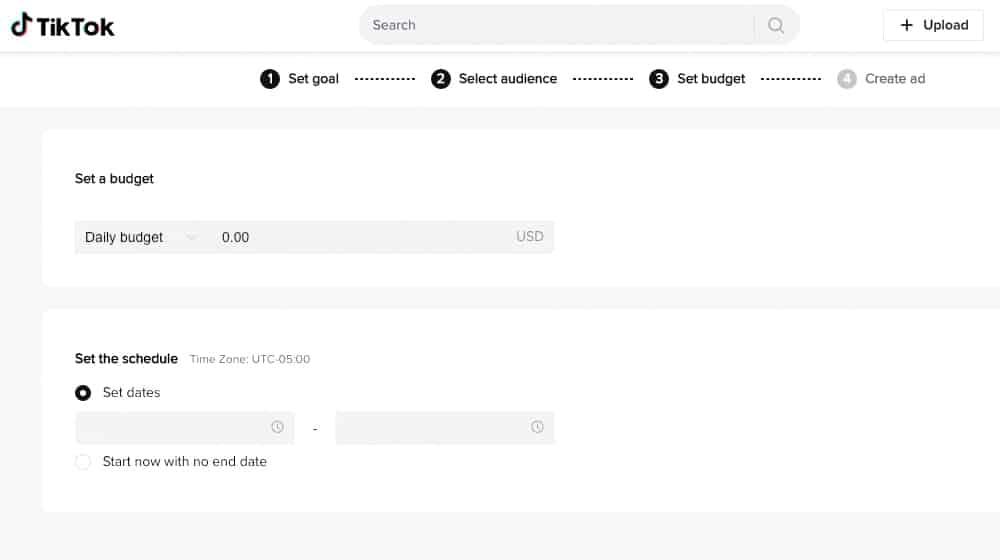
TikTok's algorithm also plays a pivotal role in determining how well your ads perform. Much like other platforms, it's designed to optimize ad delivery based on your campaign's objective and performance. I've noticed that ads perform significantly better when they align with the platform's algorithm, especially when targeting younger audiences.
What About Influencer Marketing?
TikTok spent years being a growing and popular video platform before it started to roll out its ad platform. That means there was a sizable market for advertising, shall we say, informally.
Since TikTok is all about the personalities and people involved, this meant influencer marketing.
While the ad program has institutionalized influencer marketing now (you can spend a few thousand dollars to link up with an influencer for a day's "account takeover"), there's also still a thriving influencer marketing market outside of the usual advertising platforms. Content creators sell space on their feed for anything from "a free sample of the product" to tens of thousands of dollars, depending on how big they are and what they can get away with. They're usually happy to do it, so they don't give TikTok a cut, though as TikTok's advertising grows more popular, they'll likely cut back on it by banning creators who circumvent the ads program.
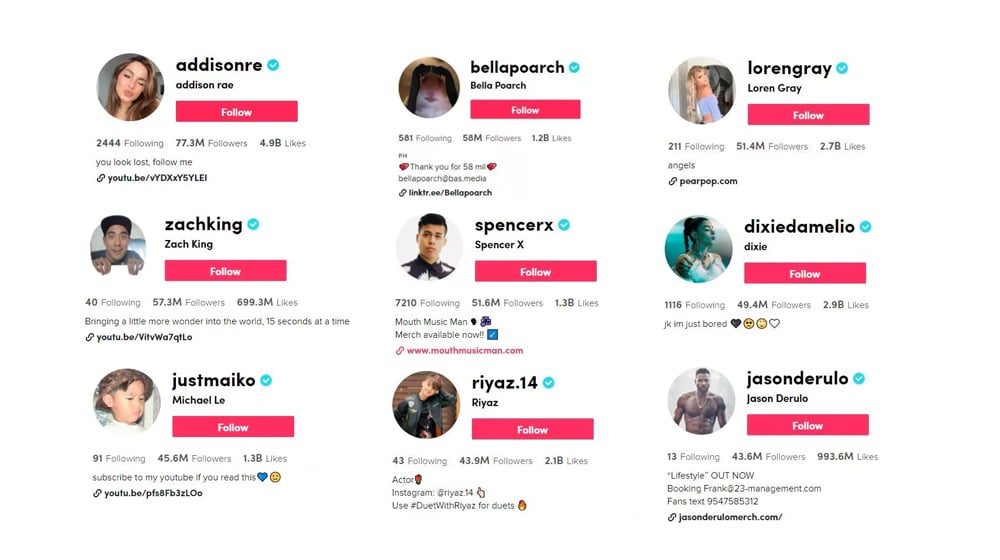
Influencer marketing is great because it's native advertising from the content creator to their followers. You aren't injecting your content into their feeds where it might be less welcome; you're getting someone this audience already trusts to promote your content.
It can be pretty potent!
It's also generally pretty expensive compared to the usually promoted content and display ads. Costs vary wildly depending on the niche, who you're networking with, and so on, of course. Plus, since you aren't the one producing the TikTok videos, it can get you a presence on TikTok without needing to invest in video creation. User-generated content is a powerful thing.
Should Your Business Invest in TikTok Marketing?
This question is one only you can answer, but it really comes down primarily to demographics.
TikTok is almost entirely used by millennials and Gen Z. That means it's a great option for brands looking to advertise to these generally younger people (remember, of course, that the oldest millennials are about 40 now, so "younger" is relative). This is also overwhelmingly a B2C audience.
Is that your target audience? If so, can you hire someone (or a marketing company) who can keep up with TikTok trends and produce videos on a short turnaround that can promote you and capitalize on those trends before they disappear?
If you can, TikTok can be a great platform. It has the highest engagement rates out of any modern social network; it's just hidden behind a higher barrier to entry than other social networks. Why not give it a try?
Do business owners exist on TikTok? Sure! Will you probably pay to reach 200-300 non-business users before you reach one business user? Most likely.
If your company requires a B2B audience, you'll be better suited with something like Google Ads or a content marketing agency (like ours!). This will help ensure that you're only paying for qualified visitors that have the potential to become customers.
What has your experience been with TikTok Ads? Is your business B2B or B2C, and what strategy has worked best for you? Do you have any questions for me? Please share in the comments below; I'd love to hear from you!




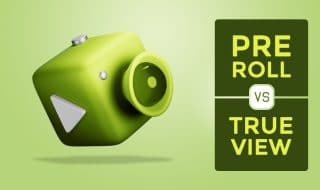

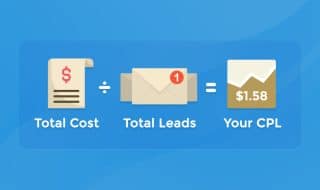



December 30, 2023
merry christmas and.. very infomative article keep posting ....
January 09, 2024
Thanks Valerie, Merry Belated Christmas to you too and Happy New Year! Thanks for your comment.
July 19, 2024
I'm interested in earning money with TikTok, but I can't afford 50€ a day. Is it still possible? I'm new to this and just thinking about starting, so I have no idea what I'm doing. Is there someone who can help without costing a lot?..
August 02, 2024
Hey Charmaine! Drop me a line, I'd be happy to chat about this 🙂